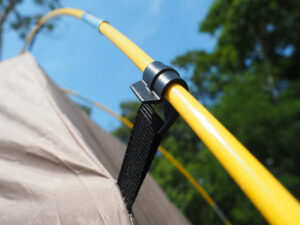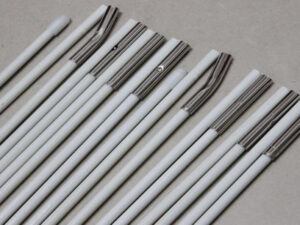Tents are a must for outdoor activities. The tent is mainly composed of four parts: an internal tent and flysheet, frame, bottom tent, packaging and auxiliary accessories. In addition, the design and support methods of the tent are also important technical indicators.
The pole is the supporting framework of the tent. The commonly used materials are fiberglass pole and aluminum pole. The tent pole is processed into a single section pole with a length of 25cm to 45cm and a diameter of 7mm to 12mm. The poles are connected with each other by ferrules.
The FRP pole (which is also called fiberglass pultruded rod)is composed of polymer resin and glass fiber, and its advantages are good formability, lightweight, and weather resistance. However, in a harsh environment, it may bend or even break, fail to set up the tent smoothly, while the aluminium pole is more strong to resist wind. Considering the cost of the pole, the fiberglass pole is more cost-effective thus it enjoys a good market share. It is mostly used in middle and low-end tents.
The wind resistance of the fiberglass pole tent is maximum grade 5 to 6. When it exceeds its capacity, the FRP pole will break. The wind resistance of the tent is not only related to the material of the tent pole but also related to the number of tent poles. In general, the more the number of tent poles, the better resistance to wind. Therefore, if 3 sets or more sets of FRP poles are used, they can resist grade 6 to 7 winds and even grade 8 gusts under good support.
- Flexible fiberglass rod for tent pole
- FRP rod






























